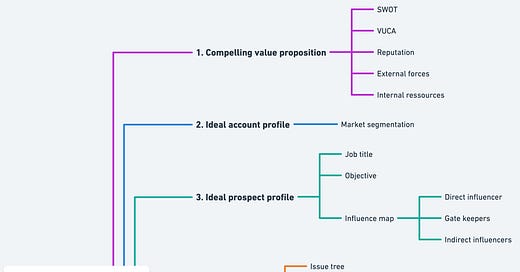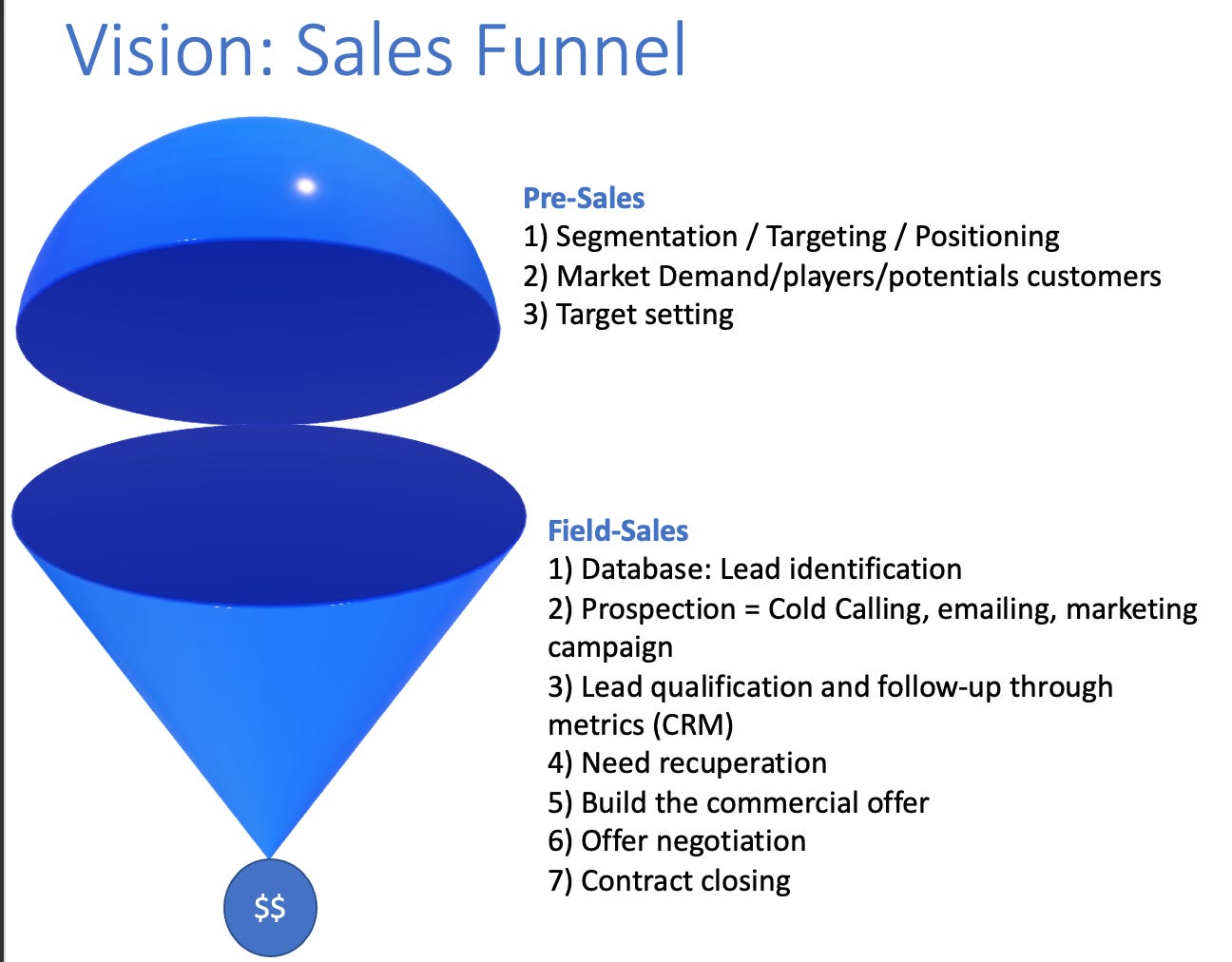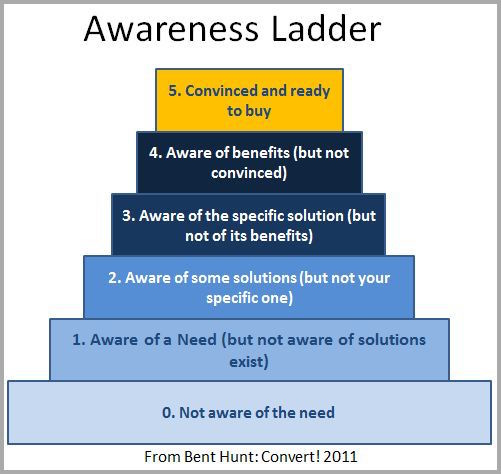Read time: 6 min.
Welcome to the 10th edition of Scale with Outbound. (if you want to follow my new case studies, you can follow me on LinkedIn).
In this newsletter, you will :
Discover how I help my clients reach out to their target customers to book more qualified meetings and generate revenue.
Access my document, processes, experiments, learnings, and failures.
👉 Grab my lead gen automation templates here.
I'm sharing my learning here with you.
Summary
Start with why
Compelling value proposition
Ideal account profile
Ideal prospect profile
Engagement
Qualification
Continuous improvement
Bonus
Start with why
Last week, I came across a remarkable book titled "Predictable Prospecting" by Marylou Tiller and Jeremey Donovan.
It resonated with me in a unique way, possibly because the authors and I share an engineering background and view sales as a process.
I'd like to share an example of my initial offer to a client in September 2021, which aligns with this shared perspective.
This article aims to summarize all chapters of Predictability Prospecting by highlighting my key learnings.
Compelling value proposition
To kick off, it's important to establish a clear understanding of how your company's value proposition sets you apart from competitors and why customers choose to buy from you.
One common issue faced by SDRs is a lack of detailed knowledge about competitors, resulting in a less effective pitch.
It's essential to have a holistic view in order to accurately convey the value proposition.
To do so, they redirected us to the following tools:
SWOT matrix
Reputation
Porter’s 4P model
Internal resources
External forces
As we delve further into the book, they continue to emphasize the importance of the value proposition and highlight how humans tend to be risk averse.
So, while preparing your pitch around your value proposition, you need to anticipate the following questions:
Why change
Why now
Why with us
These are the questions that your prospect is likely to ask.
Ideal account profile (IAP)
Now that you have a compelling value proposition, it's time to choose which accounts to reach out to.
They need to share two characteristics:
High lifetime value
Fastest velocity
“You can’t be all things to all people”
When it comes down to it, selecting the right accounts is crucial to avoid wasting time on uninterested parties.
By exploring various segmentation criteria, such as firmographics, operational factors, and situational aspects, I have gained valuable insights.
One key takeaway has been the importance of SIC Code and NAICS classification in prospecting and accurately segmenting accounts.
It's worth noting that buzzwords often fail to capture the full scope of a business, as exemplified by the limitations of self-reported data on LinkedIn.
Personally, I enjoy leveraging data to simplify decision-making and reduce the burden of choice.
If you're interested in a Python use case, I've provided more details below.
Ideal prospect profile (IPP)
Here we dig deeper with the idea of selecting prospects who are most likely to buy from you involved in the buying decision.
To do that, you need to have a holistic vision by considering:
The direct influencer,
Gatekeepers,
Indirect influencers.
You can find valuable information about those IPP by looking at their job title, job posting, or professional job objectives.
Engagement
I found this chapter to be very refreshing.
In my previous work experience, it was difficult for me to articulate the significance of having a proven PMF to companies that were struggling to find one.
The key to delivering the right message is to acknowledge that potential customers are at different stages of purchase intent in the buying cycle.
This is referred to as the "awareness ladder" concept.
It is important to recognize the current level of purchase intent of your prospective customer and take steps to move them to the next stage.
Simply appearing in their inbox and requesting a call during the first interaction is not enough.
Building a relationship takes time.
In initial outreach, the customer may not even be aware of their need, so the focus should be on educating them about the problem, rather than selling specific features.
To help find the pain, they proposed the following tools:
Issue tree
Pain validation
From whom
To do what
In order to
By what means
Triggers
They finish with setting up prospecting campaign templates and setting up the right cadency.
They are suggesting accumulating 8-9 points of contact over a period of three weeks by utilizing a combination of email and phone communication..
(Dis)-Qualification
When qualifying a prospect, it's important to also consider disqualifying those who may not be a good fit.
Although this may seem simple, it's easy to become solely focused on maximizing profits instead.
They proposed different templates to do that:
BANT: Budget / Authority / Need / Timeline
AWF: Are we a fit
ANUM: Authority / Need / Urgency / Money
SPI selling: Situation / Problem / Implication / Need-payoff
Continuous improvement
Every process needs to live and be improved over time.
We can learn about some 6 Sigma and design thinking processes to that extent.
Define → Measure → Analyze → Implement → Control
Bonus
Here are some quotes I keep with me - I hope they will resonate with you too:
“To get predictability in revenue, you have to have predictability in lead generation”
“What matters most is to nail a niche of customers who value your offering as a must-have, not merely as nice to have”
“Prospect doesn’t care about you. They care about what you do for them”.
I hope you find this content helpful.
Quick Reminder: If you like my emails, please do “add to address book” or reply.
I look forward to seeing you next week.
PS: Here're my last articles if you have missed them
👋 New round here? Welcome. Join the newsletter here 👇





